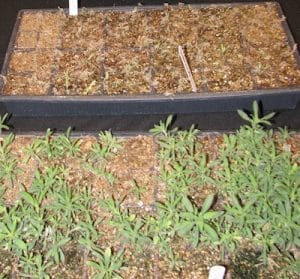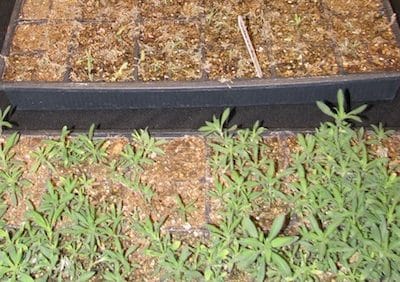
The first few weeks of the growing season is a great time to police fields for suspicious weeds. Look for weeds that lived through the pre-seed burnoff or post-emergent sprays while others of the same species have died. These few weeds could be resistant to one or more herbicide groups, and it would be good to nab them early.
Diversification is at the root of prevention. To outsmart weeds, apply different products, use them at different times of the year, and rotate crops. Winter crops, for example, provide cover and competition in the fall and spring that annual spring crops cannot.
The following tactics are most effective when used in combination:
Control weeds early. Herbicides are more effective on small weeds. Pre-seed burnoff and early in-crop applications also limit weed competition and improve crop yields.
Rotate herbicide groups. Use a variety of herbicide groups (modes of action) through the whole crop rotation. If weed management depends on glyphosate in the pre-seed and post-harvest windows as well as in-crop in Roundup Ready crops, the selection pressure for glyphosate-resistant weeds is very high.
Use crop rotation to your advantage. Crop rotation allows for a wider range of herbicide groups. For example, while cleavers tend to be a bigger concern in canola crops, growers have more options to effectively control cleavers in cereal crops. Growing crops with different seeding and harvest timing — such as winter cereals and perennial forage crops — also diversifies weed removal timing options and provides weed competition in fall and early spring.
Use tank mixes. Hitting weeds with two modes of action reduces the risk of selecting for resistance, or having herbicide resistant weeds escape and set seed. Tanking mixing carfentrazone with pre-seed glyphosate applications will prevent the development or escape of glyphosate-resistant kochia, for example.
Use the right herbicide at the right rate and apply at the right time. Follow labels for timing, ideal spraying conditions, controlled weeds and correct rates. Cutting rates, for example, may reduce herbicide efficacy and increase weed seed return to the soil seed bank.
Control weeds throughout the season. Spraying pre-harvest can reduce the weed seed bank for escaped patches, and spraying in the fall can be highly effective for perennials and winter annuals.
Use integrated weed management (IWM). IWM includes seeding practices to improve crop competitiveness — such as higher seeding rates, shallow seeding depth, narrow row spacing and high quality seed. Placing fertilizer closer to the seed and using insect and disease protection when necessary will also improve crop competitiveness. Later seeding dates allow control of early weeds in the pre-seed window. Tillage and spot mowing to prevent seed set are mechanical alternatives.
Related links:
Time for a suspicious-weed take down
Canola Encyclopedia section on Integrated Weed Management

